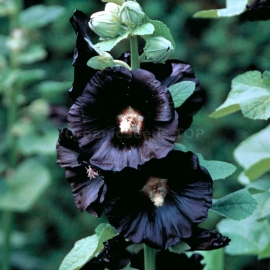
«Black» - Organic Hollyhock Seeds
1.14 €
Silky, dark-purple flowers add a dramatic dimension to gardens and a lovely deep, rose-purple color to herb teas. Like other members of the mallow family, it helps sooth irritated mucous membranes. Described as early as 1629 by John Parkinson.
-
Organic Hollyhock «Black»
Silky, dark-purple flowers add a dramatic dimension to gardens and a lovely deep, rose-purple color to herb teas. Like other members of the mallow family, it helps sooth irritated mucous membranes.
Described as early as 1629 by John Parkinson, as 'dark red like black blood', it was grown by Thomas Jefferson, and offered by John B. Russe in an 1827 catalog. The elusive maroonish-black color of this old garden favorite has fascinated gardeners for centuries; its height, single flowers and rare color combine to create a riveting presence in the garden.
Historical tidbit.... Old fashioned hollyhocks grew tall enough to disguise an outhouse...so were called "outhouse hollyhocks". Since outhouses were an unmentionable subject in Victorian days, visitors knew to look for the hollyhocks when seeking the outhouse, rather than asking where it was!
How to Grow
Planting hollyhock may be done in spring or fall. Select a sunny location sheltered from the wind. Try to have the soil worked up at least one week before planting time.
Spring plantings will be safer in areas where winters are severe. Plant as soon as nursery stock is received. If plantings must be delayed, place the hollyhock in a cool, shaded area and keep the roots moist. Hollyhock seedlings are grown in a special planting mixture to promote fast growth. Do not pull this material away from the roots, but set the top of the planting material level with the soil line. Firm the soil around the plants and roots by pressing the soil with your hands. Water well to eliminate air pockets that may form around the roots.
